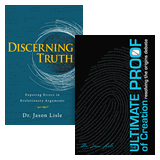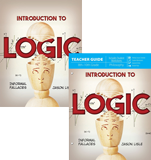Quantum Mechanics and Creation: A Brief Overview
Three-and-a-half centuries ago, Isaac Newton invented physics as we know it. Armed with newly invented calculus, Newton used his three laws of motion and law of gravity to unite the motions of bodies on earth with the motions of astronomical bodies into a single theory. Over the next two centuries, mechanics, as this major part of physics is called, had unparalleled success in explaining natural phenomena.
Consequently, as physicists of the late 19th century began to probe physics on the very small scale (such as at the level of atoms), they naturally assumed that Newtonian physics was the proper tool to use. However, by the late 19th century, it was obvious Newtonian physics failed to explain many experimental results on the very small scale. This crisis in physics ultimately led to the formulation of quantum mechanics in the 1920s.
Brief Background of Quantum Mechanics
Why do we call it quantum mechanics? One of the postulates of Newtonian mechanics is that energy in a system can have any value. Mathematically we would say that energy is continuous. But very late in the 19th century, physicists learned that assuming energy on small-scale systems is quantized resolved many of the issues that had arisen. That is, at least on the very small scale, energy is limited to discreet values with no possibility of energy between those values. It would be as if quantities of milk could exist only as integer values of cups with no values in between. For instance, you could have one or two cups of milk, but not 1 ½ cups of milk. Physicists had no reason to think that on the very small scale, energy was quantized, other than the fact that this seemed to work. This was very strange.
Other experiments seemed to shed light on the problem. Physicists of the 19th century had much experimental evidence that light was a wave phenomenon. A wave is a periodic disturbance in a medium. But then some experiments in the late 19th century showed that light seemed to have a particle nature, that light consisted of tiny bits of something that moved at high speed. This made no sense, because a particle is not a wave, and a wave is not a particle. Again, this was strange. Even more strange, other experiments began to indicate that on a very small scale, matter exhibited a wave nature. The distinction between waves and particles was getting very blurry.
Schrödinger
The development of quantum mechanics in the 1920s unified these disparate entities into a coherent theory that seemed to describe reality on the very small scale. In 1925, Erwin Schrödinger used a few postulates of emerging quantum mechanics to adapt an equation of Newtonian mechanics to create his famous wave equation. When the Schrödinger equation is applied to a very small particle bound in a system, such as an electron in an atom, a wave equation results. In an enclosed system, a wave will bounce back and forth so that the wave interferes with itself. In certain locations, the wave will constructively interfere to produce a large displacement, while at other locations, the wave will destructively interfere to produce no displacement. The result is a standing wave.
Musical instruments make use of this phenomenon. Consider a brass instrument. Blowing into the instrument introduces many random waves in the tube of the instrument. As the waves move back and forth in the tube, most of the waves destructively interfere to cancel out, leaving only a few waves that constructively interfere to produce a standing wave. It is this standing wave that we hear the instrument produce. Changing the length of the tube results in a different standing wave, which is revealed by a different pitch. In quantum mechanics, the reason why a particle confined to a system has quantized energy is that only certain standing waves are permitted—all other waves destructively interfere.
What does the wave equation produced by the Schrödinger equation mean? When considering many particles, the square of the wave equation is a probability function. The probability function accurately predicts where the particles will be. That is, when doing an experiment with many particles described by quantum mechanics, the particles will distribute themselves in a manner that matches the distribution function predicted by the wave equation, with the greater number of particles in those locations with higher probability.
For instance, in a classic experiment, a beam of electrons is shot toward a plate with two very narrow, closely spaced vertical slits. If the electrons behave as a wave, then as the wave emerges on the other side, the wave will produce a distinct interference pattern that indicates that, like any other wave, the electrons went through both slits simultaneously. What we observe is exactly that, giving us high confidence that quantum mechanics is a very good theory. Even though we think of electrons as being particles, they also act as if they are a wave. That’s strange. OK, a better word probably is weird.
Copenhagen
The Copenhagen interpretation of quantum mechanics was controversial from the start, and it continues to be.
It gets weirder. It is possible to set up a similar experiment, but this time instead of measuring an ensemble of many particles, it samples each electron to determine which slit it passes through. Amazingly, when measured individually, the electrons pass through one slit or the other, but not both. Are you confused? Don’t worry, physicists have pondered this question for nearly a century, and still, there is no agreed-upon resolution of this dilemma.
Eventually, most physicists decided upon the notion that a particle in a quantum mechanical system, such as the electrons in the double-slit experiment, exists in all states simultaneously (the equivalent of passing through both slits, as dictated by the wave). It is not until someone observes the particle (such as the last experiment mentioned) that the wave equation collapses, resulting in the particle assuming one value or another. In the double-slit experiment, this amounts to the electron going through one slit or the other. This understanding is called the Copenhagen interpretation, for it was in Copenhagen that Niels Bohr and Werner Heisenberg developed it right after Schrödinger produced his equation.
Dead and Alive?

Fig. 1. Diagram of Schrödinger’s cat thought experiment. Image Credit: Dhatfield, public domain via Wikimedia Commons.
The Copenhagen interpretation of quantum mechanics was controversial from the start, and it continues to be. Some very famous physicists (who had key roles in the development of quantum mechanics) strongly objected to the Copenhagen interpretation. For instance, Einstein said something to the effect that “God does not play dice with the universe.” But if quantum mechanics is the ultimate reality, then even macroscopic systems are the sum of their constituent quantum systems. Hence Einstein also asked, “Do you really think the moon isn’t there if you aren’t looking at it?”
Schrödinger eventually said that if this is what quantum mechanics has come to, he regretted having anything to do with it.
Schrödinger developed his “Schrödinger’s cat” thought experiment to illustrate the absurdity of the Copenhagen interpretation. Imagine a cat confined to a sealed box with a quantum mechanical device that acts as a trigger to release poison gas into the box. After some time, there is a 50% chance that the trigger has released the gas, killing the cat. Therefore, the cat simultaneously exists in the state of being both dead and alive. It is not until a scientist opens the box to examine the cat that the wave equation collapses, whereupon the cat assumes the state of either being dead or being alive. But doesn’t the scientist also constitute a system governed by quantum mechanics? So, doesn’t it require a second scientist observing the first scientist to collapse the wave equation? But doesn’t that introduce the need of a third scientist? And a fourth scientist, quickly leading to an infinite regression of scientists? Schrödinger eventually said that if this is what quantum mechanics has come to, he regretted having anything to do with it.
Theory of Everything?
As bad as the Copenhagen interpretation might be, its alternatives are even worse (such as multiple universes). Therefore, some physicists have cast about for a new approach. A recent article in New Scientist focused on one of these new approaches. This article begins with discussing what it calls two contradicting laws of modern physics, the first law being the wave equation of quantum mechanics and the second law being the Copenhagen interpretation. The article then pointed out that quantum mechanics violates the principle of locality, that objects interact in a way that depends upon their separation, but that quantum mechanics causes particles to interact instantly, even if they are very far apart. This phenomenon is called quantum entanglement.
Every physicist recognizes the need to unify physics, much as Newton unified the motions of objects on earth with the motions of objects in heaven. The next great unification was that of electricity and magnetism by James Clerk Maxwell in the mid-19th century. This unification led to the belief that further unification was possible. Today, physicists recognize that there are four fundamental forces. They are, in order of increasing strength: gravity, weak nuclear force, electromagnetic force, and the strong nuclear force. Four decades ago, the weak nuclear force and the electromagnetic force were unified into a single theory called electroweak. The unification of the remaining three is an ongoing problem. It is expected that the electroweak and strong nuclear forces will be unified first, and a name for such a theory has already been chosen: Grand Unified Theory. It is a much more intractable problem to unify gravity with the rest. If that is accomplished, it will be called the Theory of Everything, because all forces of nature will be unified into a single model.
But a Theory of Everything has many obstacles. The primary obstacle is that gravity seems to be incompatible with the other theories. The current best theory of gravity is general relativity, which, along with quantum mechanics, is one of the twin pillars of modern physics. General relativity describes gravity as a bending of space-time. This space-time is assumed to be smooth and continuous, but quantum mechanics assumes that space and time, like matter and energy, consists of discrete chunks.
New Alternative?
As a starting point in solving this problem, the author of the New Scientist article proposed six basic hypotheses about how the universe works:
- The history of the universe consists of events.
- Time causation is fundamental.
- Causation doesn’t go backward: events don’t “unhappen.”
- Space is constructed from the web of causation between events.
- Energy and momentum are conserved when events cause other events.
- The amount of information that can flow between events through emerging space is determined by that space’s area.
There is nothing very new about any of these hypotheses. In fact, some of these were assumed in some form by ancient Greek philosophers and scientists. For instance, the first one stating that the history of the universe consists of events is obvious and ought to be treated as an axiom. The second hypothesis, which states that causation in time is fundamental is a little trickier, but again is something that ought to be obvious, and hence ought to be an axiom as well. Time causation in this manner has been used at least since the time of Aristotle to argue for the existence of a Prime Mover, or God.
The third hypothesis, which proposes that causation only works forward in time appears to be an axiom as well. This imposes a direction in time, something that has been attributed to the second law of thermodynamics as “time’s arrow.” Thus, the third hypothesis is the inclusion of at least some aspects of the second law of thermodynamics. The fourth hypothesis, in which space is constructed from the web of causation between events appears to be a statement about the nature of space, though it is a little vague. This could be a hint of some profound statement yet to come about space that is very different from quantum mechanics and general relativity, or it may tip in favor of one or the other. The fifth hypothesis is an expression of the first law of thermodynamics and Newton’s laws of motion.
The sixth hypothesis is the most interesting to me. It explicitly mentions information without bothering to define what information is. The article discussed some aspects of this as if it were discussing energy. Some creationists have applied the second law of thermodynamics to information, so the idea that energy and information are related has resonance with many creationists. The idea that some entity passes through the area bounding a volume of space is not new to physics—field theory makes use of this concept. For instance, this approach reveals that the inverse square law of gravity is a consequence of the universe having three spatial dimensions. The intent here appears to be to handle quantum entanglement, though the direction that will take is entirely unknown at this time.
Nothing New?
What does this mean to the Christians and especially to recent creationists? Probably not too much. As I pointed out above, there is less new here than meets the eye. The reason why we even have such discussion is the weirdness that is inherent in quantum mechanics. This is because the results of quantum mechanics don’t match anything we experience in the macroscopic world. And it is this mismatch that prompts physicists to ask, “What does the wave equation in quantum mechanics mean?” But I don’t recall this question ever being asked before in the context of any physical theory. When Newton laid out his work on mechanics in his Principia, nobody asked, “What does this mean?” Nor did anyone ask such a question when Maxwell published his brilliant four equations of electricity and magnetism. Instead, everyone realized that these were elegant descriptions of how some aspect of the world worked.
The description of quantum mechanics is what it is, and it describes what we see in the microscopic world around us. If we don’t understand those results, it probably indicates that theory is incomplete or that we have the wrong view of the universe.
So why the continual second-guessing of some meaning behind quantum mechanics? Again, it’s what we perceive to be the peculiar nature of quantum mechanics. But to a person who doesn’t understand physics at all, Newton’s three laws can seem unusual. The description of quantum mechanics is what it is, and it describes what we see in the microscopic world around us. If we don’t understand those results, it probably indicates that theory is incomplete or that we have the wrong view of the universe. At any rate, quantum mechanics does accurately describe the microscopic world. What more can we expect from a physical theory? Therefore, the question of what quantum mechanics means is stupid. And the Copenhagen interpretation is a foolish answer to a stupid question.
Recommended Resources

Answers in Genesis is an apologetics ministry, dedicated to helping Christians defend their faith and proclaim the good news of Jesus Christ.
- Customer Service 800.778.3390
- © 2024 Answers in Genesis








